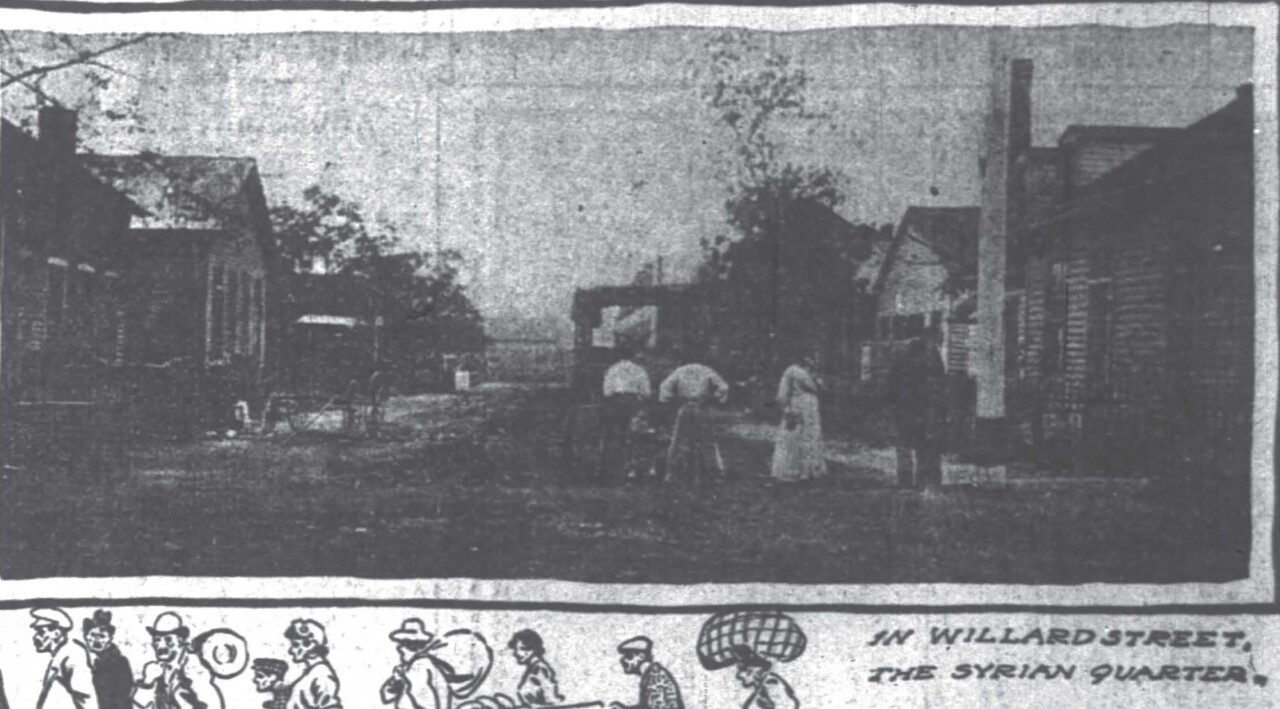INDIANAPOLIS — You could one day see a plaque outside of Lucas Oil Stadium that has nothing to do with football.
"If you look at Lucas Oil Stadium, you have no idea that there used to be a vibrant, Arabic-speaking community here," Dr. Edward E. Curtis IV told WRTV.
Dr. Curtis is applying for a marker to be placed outside of the football stadium located at 500 S. Capitol Ave. to acknowledge what once was the city's Historic Syrian Quarters.
"What used to be here 120 years ago was the heart of Arab Indianapolis," Dr. Curtis said.
Willard Street once ran through what is now known as the home of the Indianapolis Colts.
From 1890 to 1920, Willard Street was packed with people who immigrated to the United States from the eastern Mediterranean, now known as Syria and Lebanon.
In the 30 years of its existence, it was a diverse community home to immigrants from Italy, Poland, Greece, Hungary, and African Americans. According to Dr. Curtis, the Syrian Quarters was known for its roasted lamb, Turkish coffee, tobacco water pipes, and narrow townhomes.
"People would sit outside on their stoops, especially on Sundays, where they'd share food...and sing their songs. And they lived as a multiracial neighborhood of Black, white, and brown people. We just don't know that," Dr. Curtis said.
After World War I, Arab Americans were given access to more housing in Indianapolis. As a result, according to Dr. Curtis, Arabs spread out from the east to the west side in search of more land to put their grocery stores, which was a significant part of Arab culture.

Curtis, the Chair of Liberal Arts and a professor of Religious Studies at IUPUI, has made it his life's work to bring the history of Arab Americans out of the shadows. More pointedly, Arab Americans of the Midwest.
"I grew up in rural southern Illinois. My grandmother — was like my second mother — brought me up to have pride in my Arab heritage," Dr. Curtis explained. "I just had no idea when I moved to Indianapolis several years ago that there was such a rich history here."
When the professor began to look for the presence of his ancestors in their migration to the U.S., he found not only the heartbeat of the Indianapolis Arabic community but several landmarks associated with Indiana history also marked the history of Arab Hoosiers.
What Curtis found in his research was so profound that he created a map, "The Arab Indianapolis Heritage Trail."
"The first Arab American statewide officeholder was a woman in the 1960s (Helen Corey). Nobody knows about her, but she should be a household name in Indiana," Curtis noted. "Arab Americans served in the military in World War I and after, and they are memorialized in the War Memorial. One of the most prominent stores on Monument Circle (Shaheen Oriental Rugs) is today the entrance to Hilbert Circle Theatre, where the Indianapolis Symphony Orchestra plays, and that is from the 1920s part of our Indiana past and our Arab past."
The Arab Indianapolis Heritage Trail is just one of several efforts Curtis has made to bring the contributions of Arab Americans to the city and state's culture and economic growth to light.
In his 13th book, "Arab Indianapolis," Dr. Curtis documents Arab Hoosier history. It's a history that he says is "hidden in plain sight."
"I think it's got as many pictures as it does words," Dr. Curtis jokes.

![Screen Shot 2021-12-07 at 11.01.41 AM[12673].png](https://ewscripps.brightspotcdn.com/dims4/default/34572bc/2147483647/strip/true/crop/936x1384+0+0/resize/936x1384!/quality/90/?url=http%3A%2F%2Fewscripps-brightspot.s3.amazonaws.com%2F6c%2F40%2Fb1c123304c24a0e3855782122f97%2Fscreen-shot-2021-12-07-at-11.01.41%20AM%5B12673%5D.png)
In addition to photographs and history, Arab Indianapolis also has interviews, vignettes, and recipes.
"It really brings to mind the past of Arab Indianapolis. But also, the present. I partnered with the community to create portraits of people, of Contemporary Arab Americans in Indianapolis; we asked them to share their historic photographs. So it really celebrates the past and the present of Arab Indianapolis," Dr. Curtis said of his book.
In recognition of Arab American Heritage Month in April, Dr. Curtis enjoys sharing his heritage with others. He says that he recognizes that Arab Americans are a relatively small percentage of the country's population, but he doesn't want his history to be "something set aside. It's a part of" America's history.
"Arab people are not new to this place that we now call the United States. Before the country was formed, there were...Arabs here," Dr. Curtis explained. "Oftentimes, we're thought of as foreigners, as somehow we can't assimilate to this culture. But that's just not true. And the Arab American Heritage Month shows how much Arab Americans have contributed."
Arab Indianapolis is available for pre-order ahead of its June 7 publishing date on beltpublishing.com. WFYI is also premiering an hour-long documentary about Dr. Curtis' book, "Arab Indianapolis: A Hidden History," on June 16.
You can learn more about the self-guided Arab Indianapolis Heritage Trail on theclio.com and Dr. Curtis at edward-curtis.com.
MORE: An interstate erased the 'Lost Barrio of Indianapolis,' but its legacy lives on
WRTV Digital Reporter Shakkira Harris can be reached at shakkira.harris@wrtv.com. You can follow her on Twitter, @shakkirasays.



![Screen Shot 2021-12-07 at 11.01.41 AM[12673].png](https://ewscripps.brightspotcdn.com/dims4/default/723873d/2147483647/strip/true/crop/936x527+0+503/resize/1280x720!/quality/90/?url=http%3A%2F%2Fewscripps-brightspot.s3.amazonaws.com%2F6c%2F40%2Fb1c123304c24a0e3855782122f97%2Fscreen-shot-2021-12-07-at-11.01.41%20AM%5B12673%5D.png)




